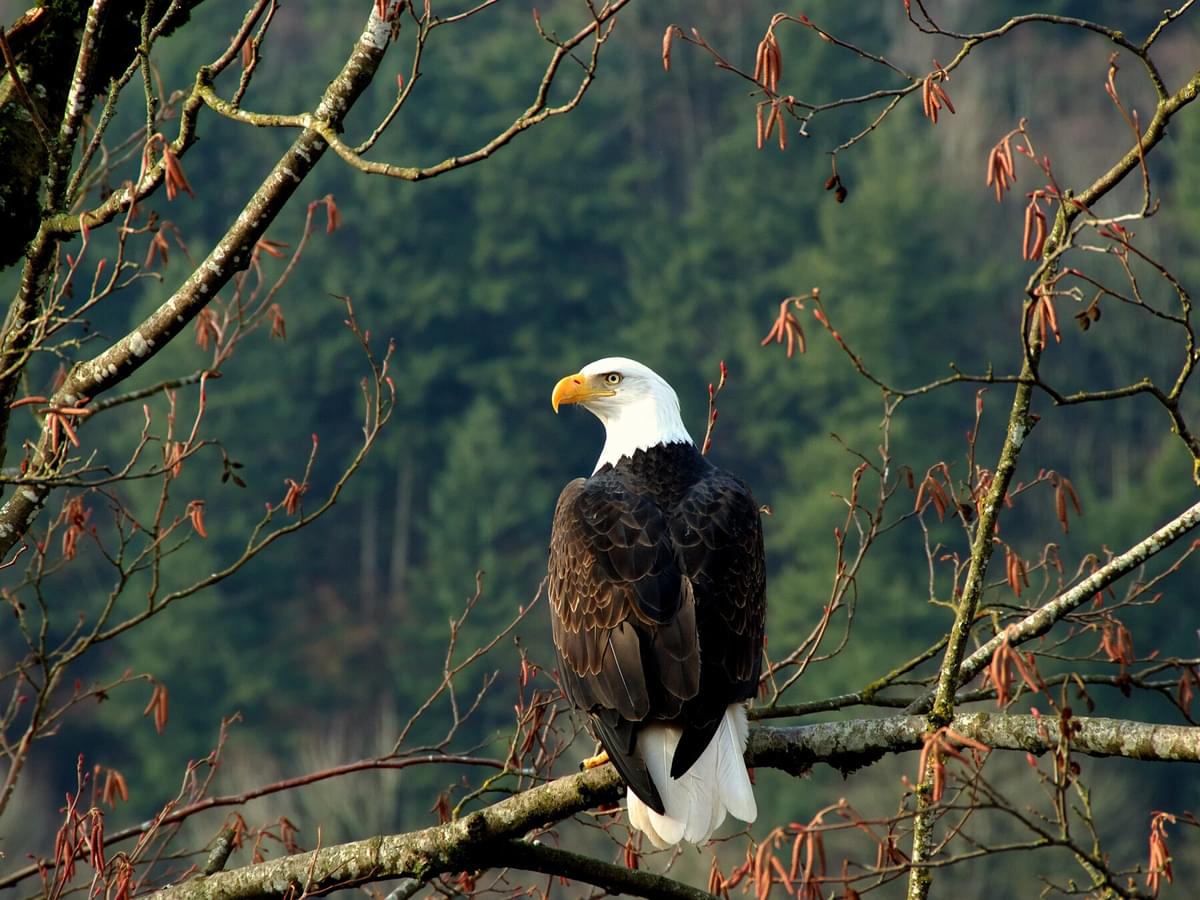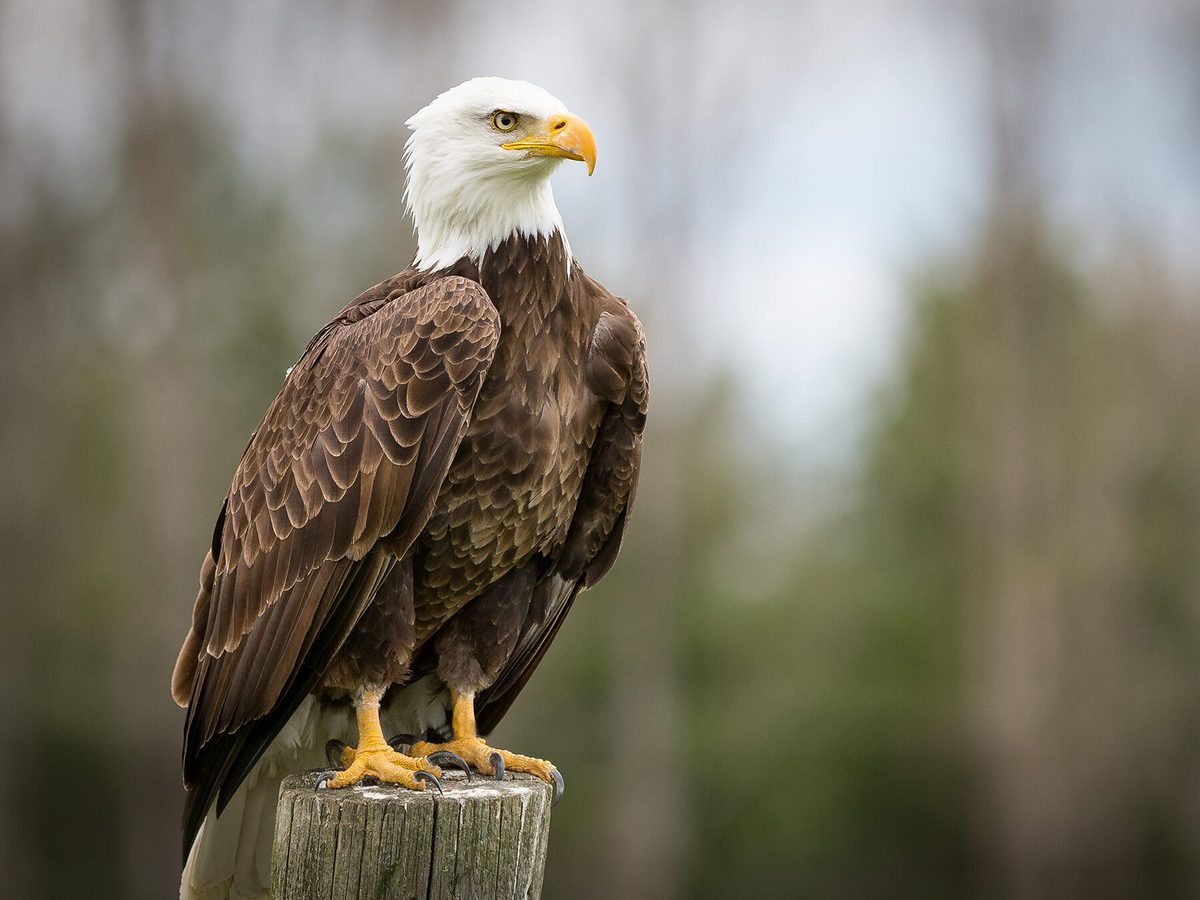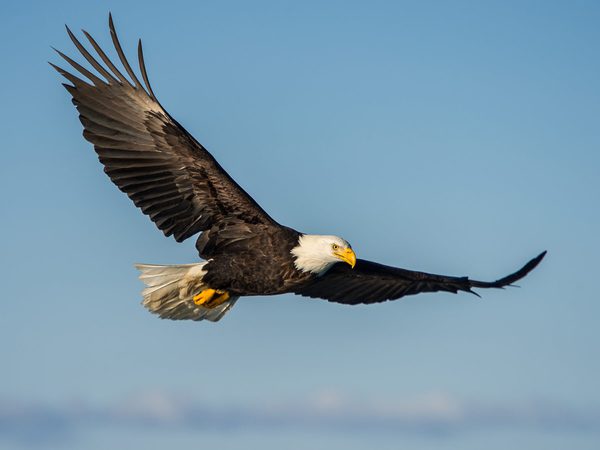What Is The National Bird of the USA? (And Why)
Last updated: 27 July 2022

- Why is the Bald eagle the national bird of the USA?
- When did the Bald eagle become the national bird of the USA?
- Who chose the Bald eagle to be the national bird of the USA?
- What does the Bald eagle represent?
- A little bit about the national bird of the USA
- Why did Ben Franklin not like eagles?
- What 3 things about the Bald eagle make it a bad choice for a national symbol?
- What was the national bird before the bald eagle?
- What is the national animal of the USA?
With 50 states, the United States has an extremely diverse range of habitats that attracts and maintains a thriving bird population across the country.
Each state has its own bird, but what is the national bird of the USA?
The USA has long been associated with the Bald eagle, a handsome bird that is associated with strength, freedom, courage, and focus - qualities the Founding Fathers wanted to associate with their new nation.
When the Declaration of Independence was signed on July 4, 1776, the Founding Fathers Benjamin Franklin, Thomas Jefferson, and John Adams were blessed with the initial task of designing the official seal for the USA.
It wasn’t until six years later, in June 1782, that a design was agreed upon, and thus, the Great Seal was born, emblazoned with the Bald eagle, that the world has come to associate with the USA.
It’s a fascinating story, and the Bald eagle is a fascinating bird to match. So, read on to discover more interesting facts about the National Bird of the USA - the majestic Bald eagle.

The national bird and animal of the USA, the Bald Eagle
Why is the Bald eagle the national bird of the USA?
Heraldry is associated with medieval Europe, where countries, their ruling monarchs, members of the aristocracy, and wealthy landowners would design their own coats of arms.
By the time America was liberated from the British colonies in 1776, heraldry was somewhat of a preserved art form that was still popular throughout Europe. The Founding Fathers thought it fitting to provide the USA with its own repeatable iconography and symbolism in the form of the Great Seal.
The Great Seal would provide the USA with its own sovereign symbol used to formalize official state documents, treaties, and transactions.
The First Committee
Benjamin Franklin, Thomas Jefferson, and John Adams were initially charged with the responsibility of creating the seal, but none were experienced in heraldry. So they enlisted a French artist named Pierre Eugene du Simitiere, who was living in Philadelphia. This was called the First Committee.
The initial designs were complex and rather convoluted. For example, Franklin wanted an allegorical scene from the Bible’s Exodus, and Du Simitiere created a design with a female figure symbolizing freedom and an American soldier holding a rifle and tomahawk.
Bits and pieces of these designs were carried forward, but overall, the First Committee was adjourned without anyone deciding on the final designs.

A majestic bald eagle in flight
The Second Committee
The Second Committee was headed by the artistically oriented Pennsylvanian judge Francis Hopkinson, and the design featured a shield and other elements used in the final design. But, alas, the submitted design was not actioned.
The Third Committee
Then, finally, the Third Committee set about crafting the Great Seal using an eagle. A heraldic expert, William Barton, incorporated a nondescript white eagle into the design.
After some indecision, everything was handed to Charles Thompson, the Secretary of Congress, who fashioned the eagle into the Bald eagle, which clutched a shield.
The shield featured thirteen chevron stripes, and the eagle grasped an olive branch with 13 leaves and 13 olives and a bundle of thirteen arrows to represent the 13 original states.
There are 13 stars above the eagle’s head, and the motto reads E pluribus unum – Latin for "Out of many, one" is held in its beak.
The final design was submitted to Congress on June 20, 1782, and was accepted that day - 6 years after the Great Seal was originally commissioned.

The Great Seal of the USA
When did the Bald eagle become the national bird of the USA?
The Bald eagle was suggested to replace the generic white eagle design submitted by the Third Committee of the Great Seal in May 1782.
The Third Committee decided that a Bald eagle was more fitting and created the final design around June 1782.
Who chose the Bald eagle to be the national bird of the USA?
The Third Committee submitted all existing designs and drawings to the Secretary of Congress, Charles Thomson. Thomson took the eagle from the previous design and specified it should be a Bald eagle. The Bald eagle was then assembled with the shield, arrows, olive branch, scroll, and stars.
Bald eagles were probably more common in the US then than they were a couple of decades ago. Some records suggest that there were over half a million Bald eagles in the USA when European settlers first arrived.

Close up of a bald eagle
What does the Bald eagle represent?
Eagles generally have a long and illustrious history of symbolism across many ancient and modern cultures. For example, in Native American, Aztec, Mayan, and Incan symbolism, the eagle was viewed as a symbol of strength, courage, wisdom, immortality, and the future.
In Europe, the eagle is associated with the concept of empire, first appearing in the Byzantine Empire and then in the Holy Roman Empire and Roman Empires.
The Roman Aquila - meaning eagle in Latin - was a symbol of war to the Romans, who used to carry a standard bearing the Aquila into battle. The eagle was designated as an important Roman symbol as early as 100 BC.
It’s worth mentioning that European symbolism is not specifically associated with a Bald eagle, as they aren't native to Europe.

The eagle was designated as an important Roman symbol as early as 100 BC
A little bit about the national bird of the USA
Bald eagles are majestic eagles, courtesy of their white head and tail. These large raptors are the second largest eagle in the US, after the Golden eagle. Bald eagles are sea eagles, also called fish eagles, and are adept at hunting fish, though they’re perfectly capable of hunting large terrestrial animals too.
Bald eagles form lasting pair bonds and construct the largest nests of any bird. A Bald eagle nest is the current holder of the Guinness World Record for the largest bird nest.
In St. Petersburg, Florida, the nest measured 2.89 m in diameter (9.5 feet) and 6m (20 feet) deep, weighing in at around 3 tons!
Due to the Bald and Golden Eagle Protection Act and large-scale conservation efforts, there are now 316,700 bald eagles in the lower 48 states. The population has quadrupled in size since 2009.

Bald Eagle perched on a branch in a tree
Why did Ben Franklin not like eagles?
There is a longstanding backstory to the choice of the Bald eagle as the primary symbol of the Great Seal. A popular myth states that Benjamin Franklin didn’t want the Bald eagle as the emblem and instead stated that the turkey was a better option. This is somewhat true, though likely said with jest rather than with complete sincerity.
In 1784, two years after the Great Seal was accepted, Benjamin Franklin wrote a letter to his daughter. He said “For my own part I wish the bald eagle had not been chosen as the representative of our country. He is a bird of bad moral character. He does not get his living honestly.”
He goes on to complain about how the Bald eagle is a lazy hunter, often perching and waiting for other birds or animals to hunt, and then fly in to steal their quarry, more like a carrion bird than an expert hunter.
Factually speaking, Franklin is right to believe that the Bald eagle regularly steals the hunt of other animals - especially the industrious osprey.
Franklin goes on to say; “For in truth, the turkey is in comparison a much more respectable bird, and withal a true original native of America.”
Franklin is in good company in his criticism of the Bald eagle; the eminent ornithologist John James Audubon described the birds as “ferocious, overbearing, and tyrannical temper” while Arthur Cleveland Bent labeled the Bald eagle as “an arrant coward with a ridiculously weak and insignificant voice.”
However, Franklin’s letter was not really directed at the Great Seal but at the emblem of The Society of the Cincinnati, an exclusive military club founded by officers of the Continental Army.
Franklin was criticizing the club, sarcastically stating that the turkey should be their emblem instead. Essentially, his letter was quipping The Society of the Cincinnati, which he and many others disapproved of.

Bald Eagle making a splash after catching a fish
What 3 things about the Bald eagle make it a bad choice for a national symbol?
1: It’s unoriginal
Eagles are not an original choice for a country’s emblem. Eagles have a long history in heraldry across both the Americas and Europe. Numerous Central and South American civilizations had already adopted the eagle as part of their state symbolism and heraldry.
Benjamin Franklin himself highlighted that “eagles have been found in all countries”, and that the turkey was only found in North America.
2: Ornithologists criticize the Bald eagle
James Audubon and Arthur Cleveland Bent, two influential American ornithologists, publicly criticized the Bald eagle. The Bald eagle is undoubtedly large and powerful, but it’s one of the lazier hunters among eagles. With that said, some 400 animals have been recorded as Bald eagle prey - so the bird is clearly capable.
The Bald eagle frequently watches other more industrious hunters and then swoops in to steal their catch rather than hunt for itself. While this could be argued as a sign of intelligence and resourcefulness, that perhaps still doesn’t justify the Bald eagle’s symbolism as courage, strength, focus, wisdom, and power.
3: The eagle is associated with war and empire
Eagles have a controversial history in European heraldry. Originally, the eagle was associated with the Byzantine Empire before being adopted by the Holy Roman Empire and Roman Empires. The Holy Roman Empire’s use of the eagle continued into the Second German Empire (1871 to 1918), the Weimar Republic (1919 to 1933), and Nazi Germany (1933 to 1945).
The two-headed eagle is also significant in Russia and many other countries, where it’s frequently linked to war and conquest. In the Roman Empire, the eagle Aquila standard was a quasi-religious symbol that soldiers would die for on the battlefield.
However, it is worth mentioning that these eagles were mostly just generic eagles - so the Bald eagle is pretty much acquitted and cannot be guilty through mere association! Moreover, the eagle on the Great Seal is clutching an olive branch, symbolizing peace, and looks left to show that it “prefers peace but is ready for war”.

Adult Bald Eagle soaring through the sky
What was the national bird before the bald eagle?
The first 13 states all had their own heraldry before the Bald eagle became the icon of the Great Seal. However, there was no national bird prior to the Bald eagle. In fact, there wasn't even a nation until 6 years before the Great Seal was finalized in 1782, when the colonies became the United States.
What is the national animal of the USA?
The Bald eagle is the national animal of the USA. However, the USA does now have a “national mammal,” too. In 2016, President Obama named the American bison the USA’s national mammal by signing the National Bison Legacy Act.
On this page
- Why is the Bald eagle the national bird of the USA?
- When did the Bald eagle become the national bird of the USA?
- Who chose the Bald eagle to be the national bird of the USA?
- What does the Bald eagle represent?
- A little bit about the national bird of the USA
- Why did Ben Franklin not like eagles?
- What 3 things about the Bald eagle make it a bad choice for a national symbol?
- What was the national bird before the bald eagle?
- What is the national animal of the USA?




